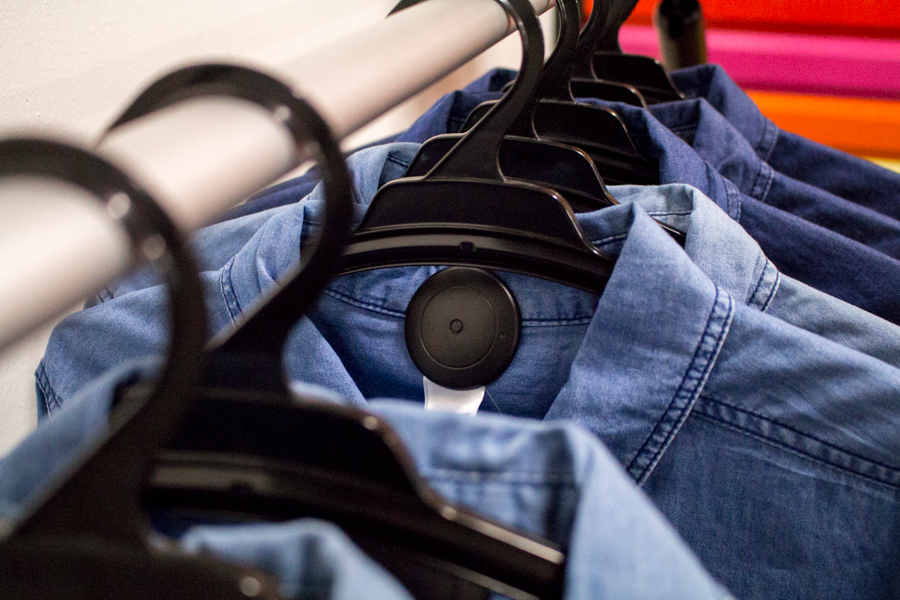What to look for in security tags

When it comes to loss prevention, Electronic Article Surveillance (EAS) remains the most popular and effective product-based anti-shoplifting strategy available to retailers.
Comprising hard tags, labels and antenna, the system is used by an estimated 90 per cent of Australian retailers, reducing shoplifting by up to 80 per cent.
However, when harnessing the power of EAS, retailers should note the tag type, shape and strength all play a critical role in the effectiveness of this system.
Here’s a guide to the factors retailers should consider when it comes to selecting security tags.
Security tag frequency
EAS is commonly available in two frequencies, Radio Frequency (RF) and Acousto Magnetic (AM), and the tags used in conjunction with these systems need to be compatible.
AM systems operate at 58 KHz, which means a signal is sent out in pulses or bursts between 50 and 90 times a second while RF operates in a sweep at 8.2 MHz.
Security tags are available in a range of shapes and sizes to accommodate both system types.
Security tag type
Security tags have evolved over recent years with designs to suit specific products. From clothing tags to bottle tags and optical tags, the tag selected should be tailored to the product it is protecting.
Meanwhile, the method of affixing the tag to the product can also vary. Clothing tags, for example generally incorporate a pin that goes through the fabric of the item, while items like shoes and handbags utilise a strong cable, lanyard or steel enforced strap that locks into the tag.
Locking mechanism
There are two common technologies that lock a tag so it cannot be pulled apart and removed – magnetic and mechanical.
Of those options, magnetic tends to be the most popular due to the lower cost of maintenance and ease of tag removal at the point of sale. It’s important to note magnetic release tags are available in a range of strengths with higher strength tags offering better security.
Tag locking strength
Magnetic tags come in a variety of strengths. These include:
Standard – Featuring a standard strength magnet, this option remains very popular with legacy systems but has the greatest potential to be circumvented by thieves.
SuperLock – Using a high-powered magnet often more than double the strength of standard magnets, tags of this grade provide increased resistance against illicit removal.
HyperLock – These locks can only be released by a detacher boasting a combination of multiple high-powered magnets arranged into a single detacher body. HyperLock detachers are difficult for would-be criminals to manufacture, source and carry around. The evolution of this magnetic technology resulted from a need for increased security and is available in ranges such as the BossTag HyperLock.
Meanwhile, HyperLock magnetic detachers can release all lower strength tags.
Multipolar magnetic – Is the latest proprietary technology that requires sophisticated bi-directional magnets to release a tag. Multipolar tags cannot be released by any other magnet detacher no matter how powerful. NeoTag Multipolar tags are the result of years of development and represent the pinnacle of magnet release tag technology.
It is recommended tags feature a minimum strength of SuperLock, with anything above that offering additional security.
Mechanical tags are not as common as magnetic tags. Often due to their high ongoing maintenance costs. Mechanical lock tags have been around since the 1980s with more advanced mechanical mechanisms being introduced to the market in the last couple of years. The lock mechanisms are generally very strong however online videos and websites are actively highlighting the ways to defeat these tags with a combination of easily sourced tools.

Security pins and pinhead size
Clothing tags feature a security pin that passes through the garment and locks into the tag, and the size of the pinhead plays a role in how easily a security tag can be illicitly removed by thieves.
Small pinheads offer the potential for shoplifters to make a small cut or tear in an item and pull the pinhead through it. Larger pinheads mitigate this risk, as removing the tag in this way causes significant damage to the product.
Pinheads are available in sizes ranging from 12mm to 30mm, and also come with the option of an ink dye deterrent that sees ink infiltrate a garment should the tag be tampered with.
Security tag shape
Hard security tags are also available in a range of different shapes, with some offering better security than others.
Some of the most common shapes for fashion tags include:
- croc tags, which have a hinge linking the tag and pin
- pencil tags, which are long and thin
- square tags
- round or shell tags.
In terms of security, shell tags are the shape considered hardest to prise open and remove illegally as the tag and pinhead correspond in size.
Other considerations
Security tag detachers
Security tags are removed using detachers which release the magnetic or mechanical locking mechanism.
Security tag detachers are best positioned at the Point of Sale, allowing for easy tag removal and label deactivation.
Tag detachers can be built into the countertop or affixed to it, and retailers should ensure these detachers are easily accessible to staff, and there are enough to service all Points of Sale.
Mechanical tag detachers normally require mains power in order to operate.
Tag positioning
Just as the size, shape and strength of security tags impacts the effectiveness of EAS, so does tag positioning on products.
Security tags should be positioned so as not to interfere with the customer’s experience of a product, but in a place where they are easy for staff to detach.
At the same time, tags should also be situated in an obvious position that deters theft and ensures anyone attempting to pull them off will cause significant damage to a product, rendering it useless.
Many retailers have store guides and policies regarding tag positioning. This ensures they are consistently positioned uniformly and correctly in a bid to maintain the aesthetic appeal of store displays, while deterring shoplifting.